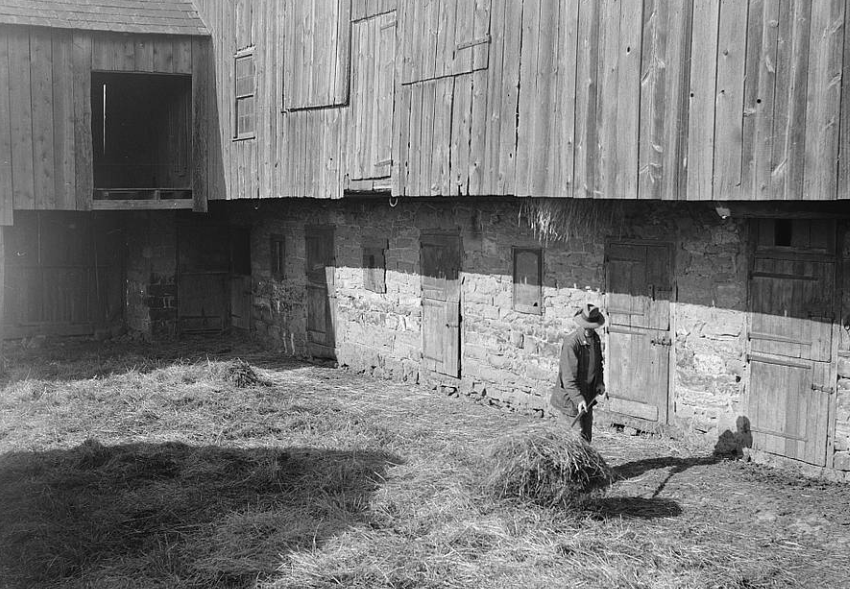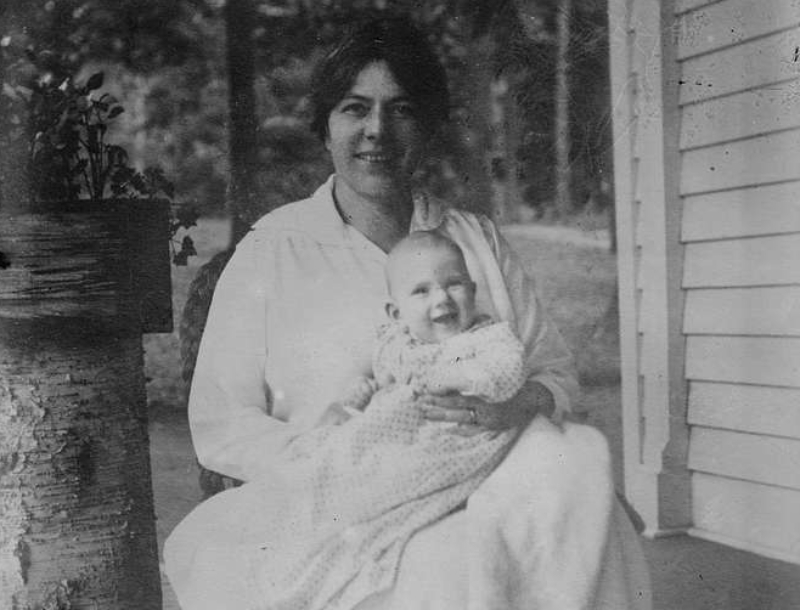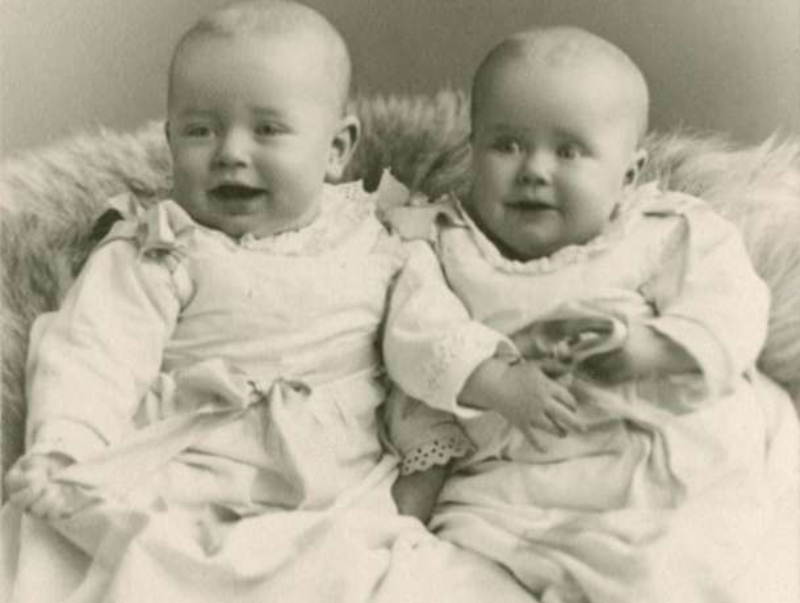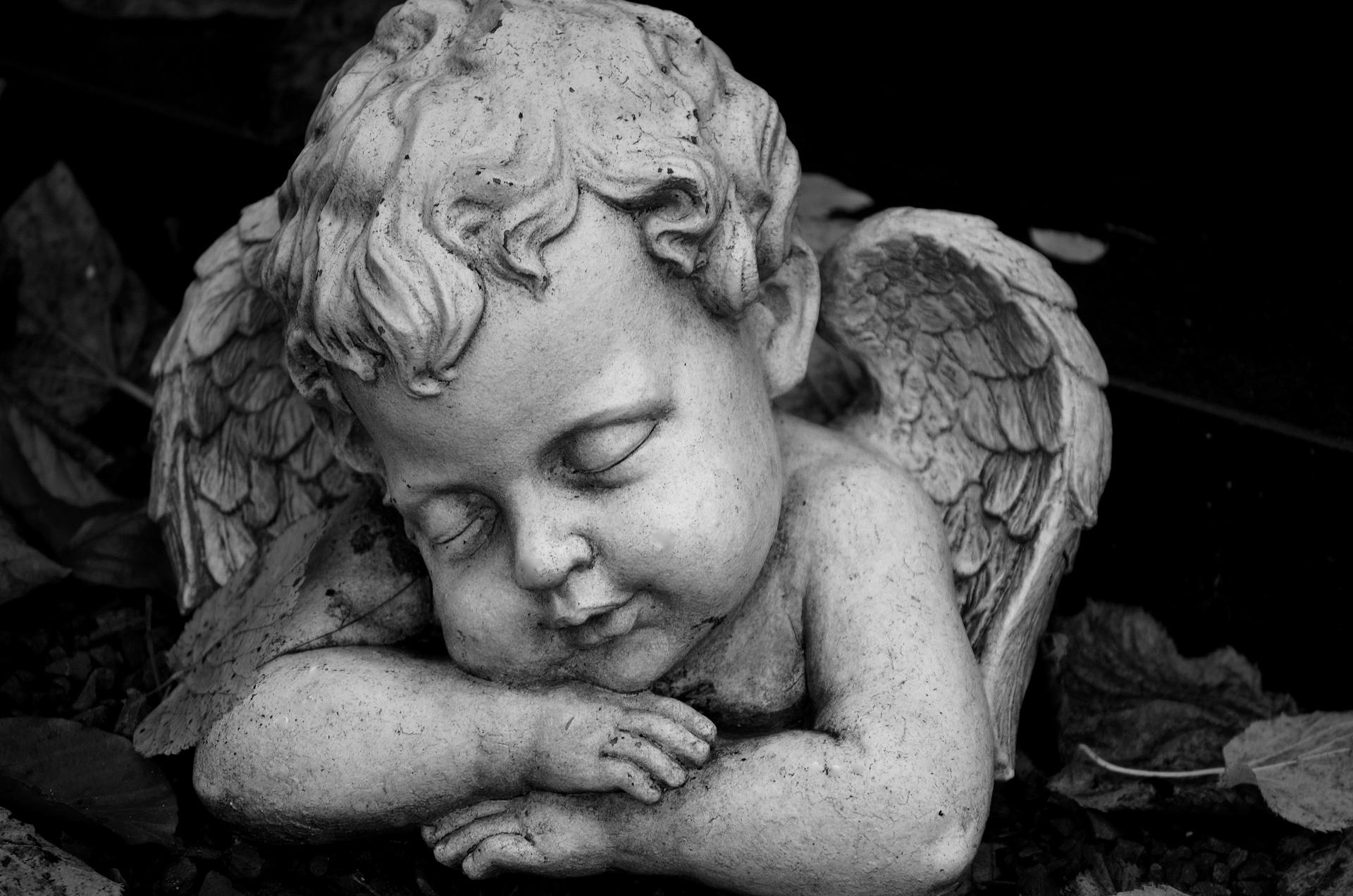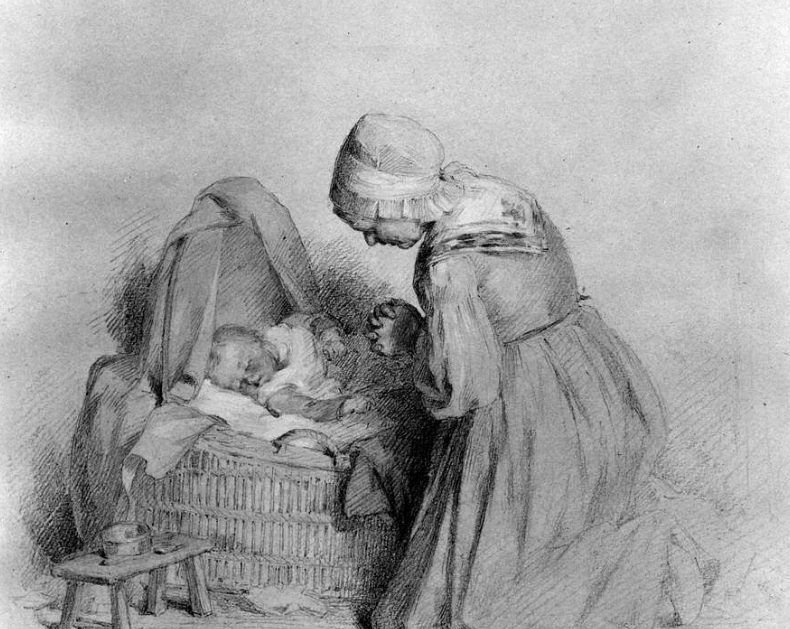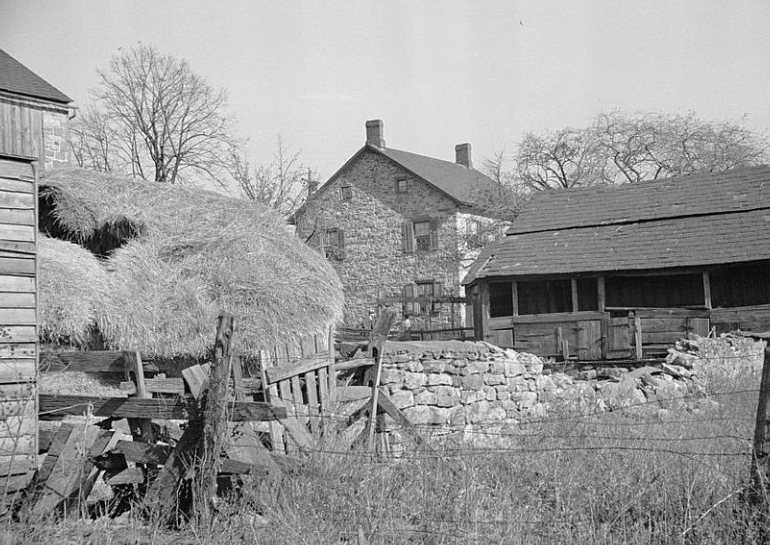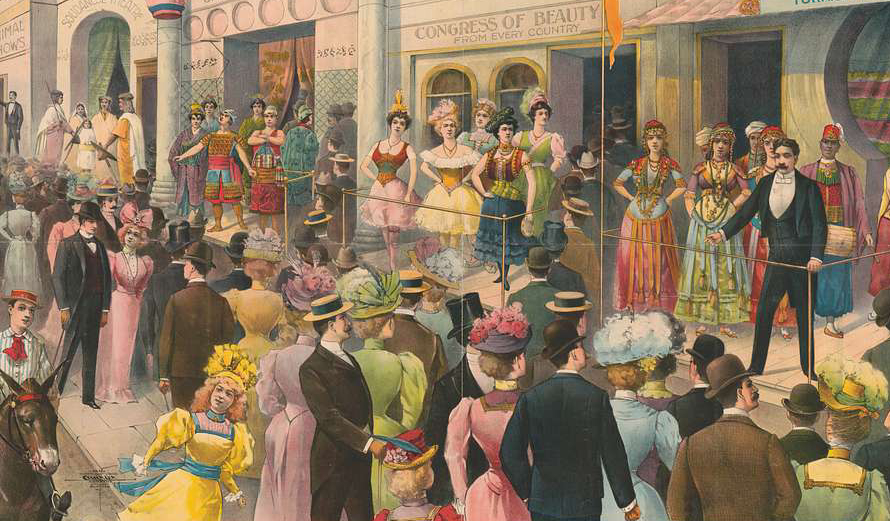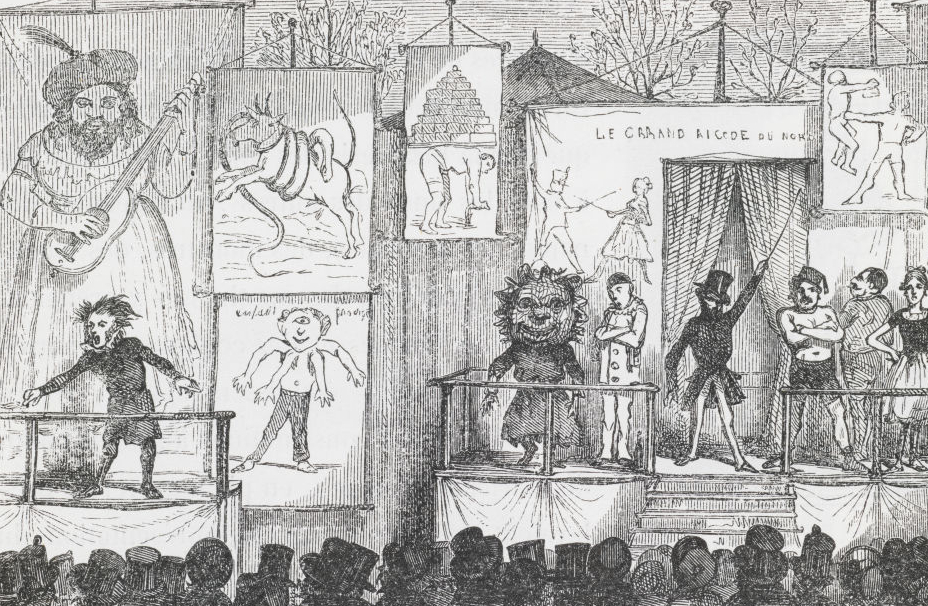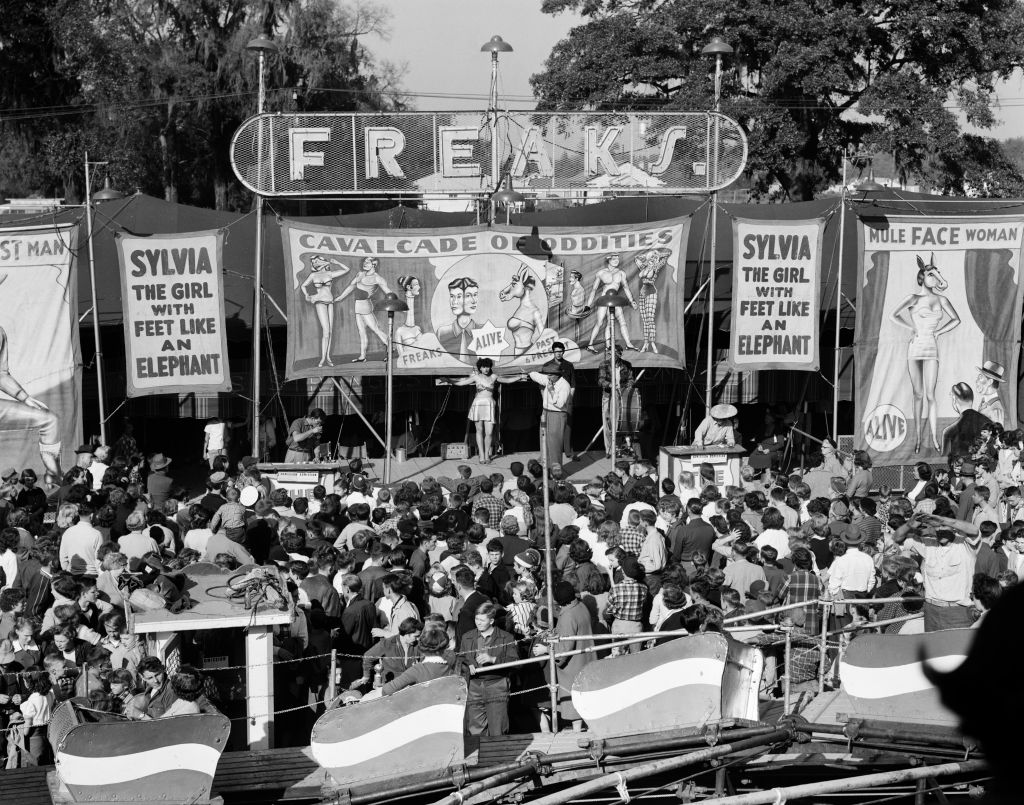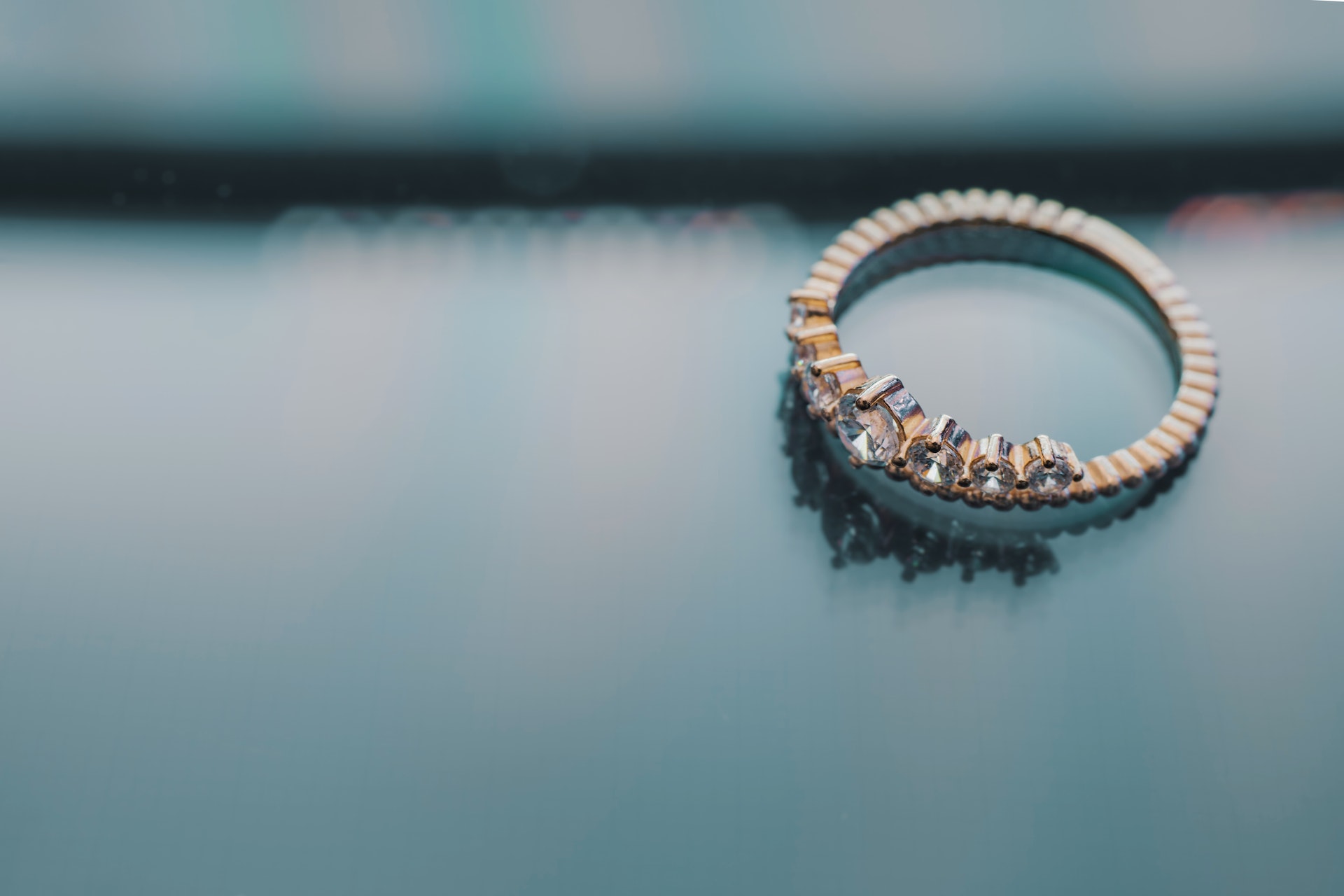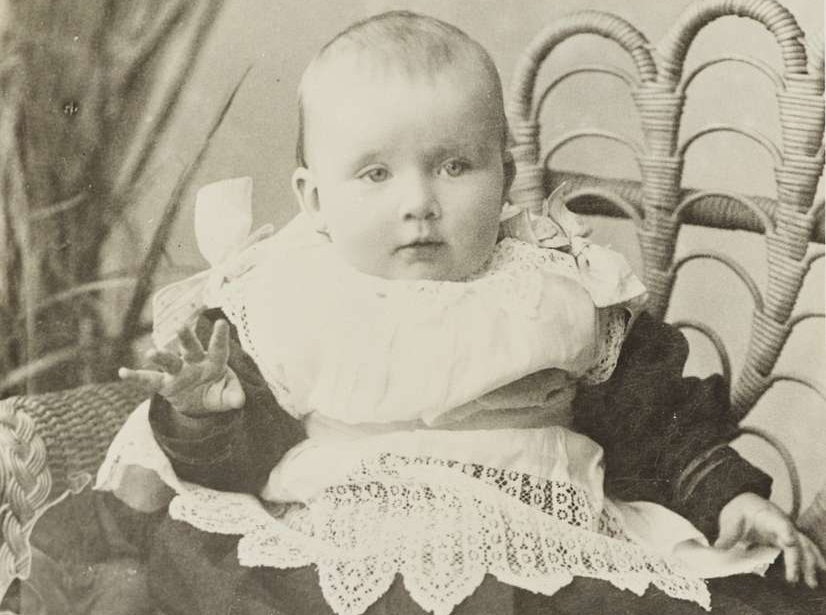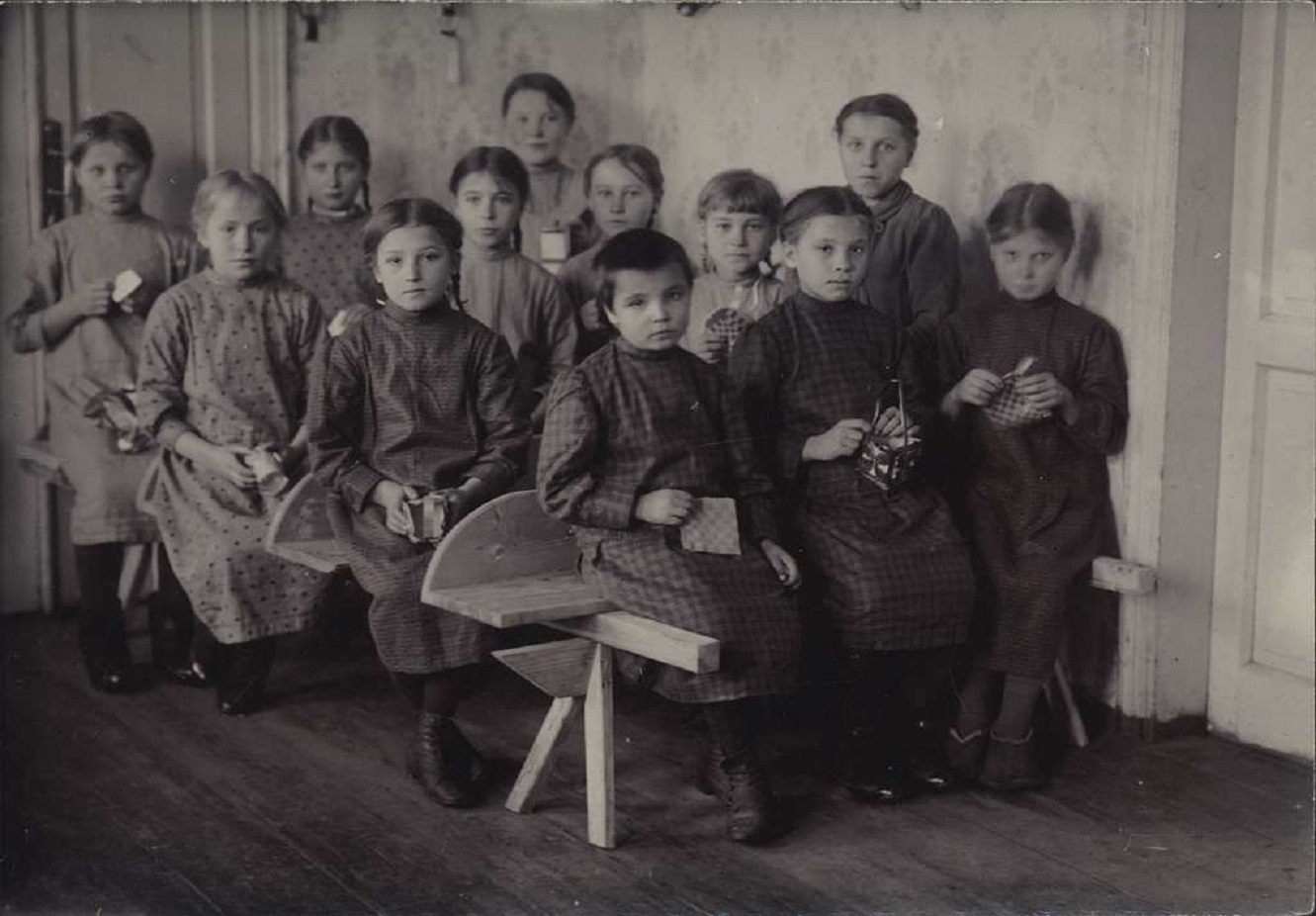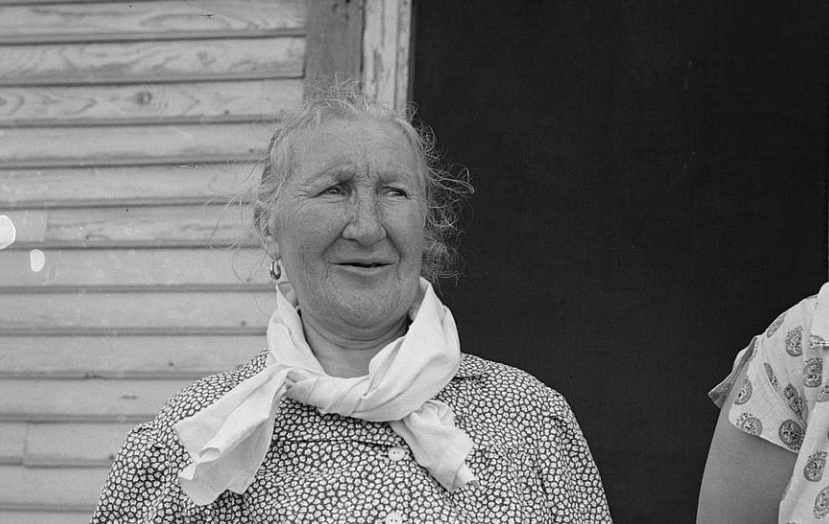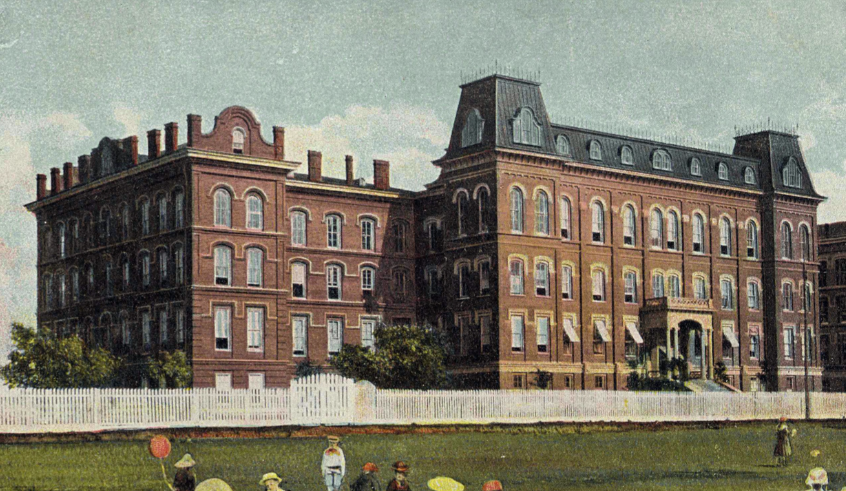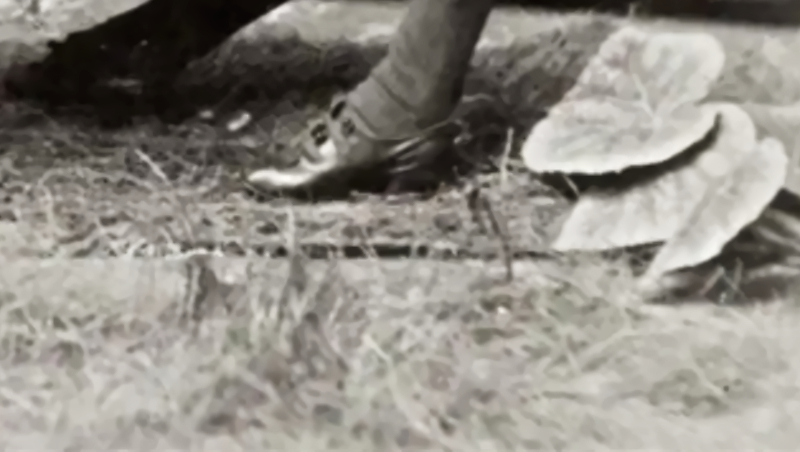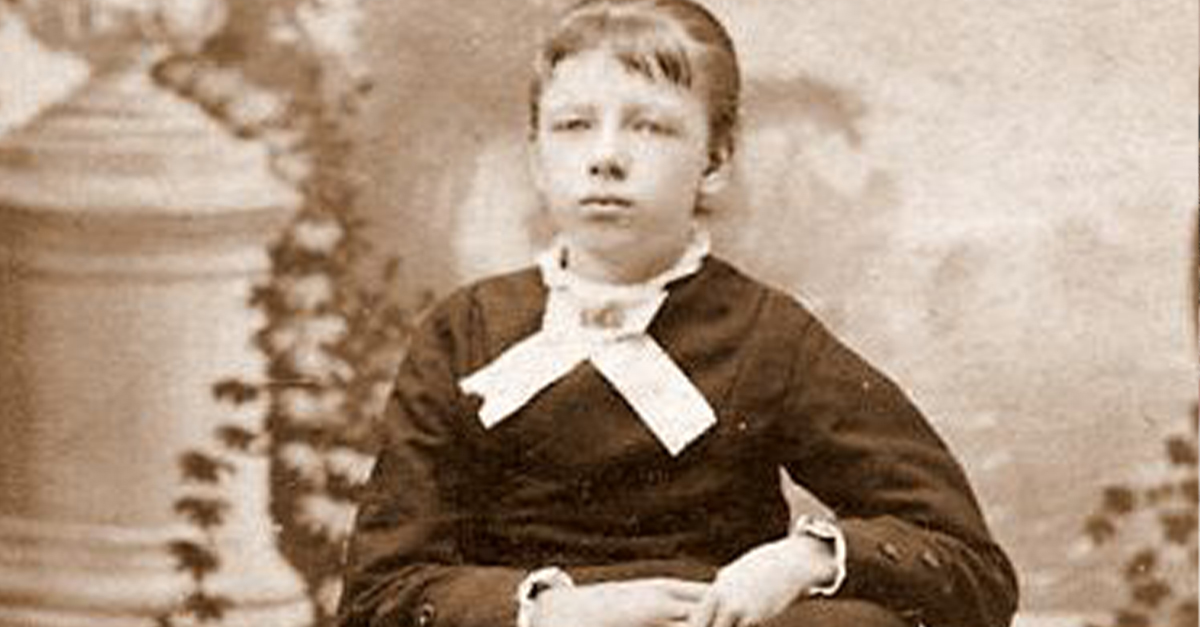Ella Harper bravely turned her unique legs into a moneymaker—but life continued to serve up horrible sorrows until she finally met her tragic end.
1. She Wasn’t Like Other People
Ella Harper was born with a deformity in her legs that made her look quite different from every other person. When people saw her attempts at using her misshapen legs for walking they cruelly called her “The Camel Girl”. Though Harper eventually used her disability to generate a steady income, her misery didn’t end there.
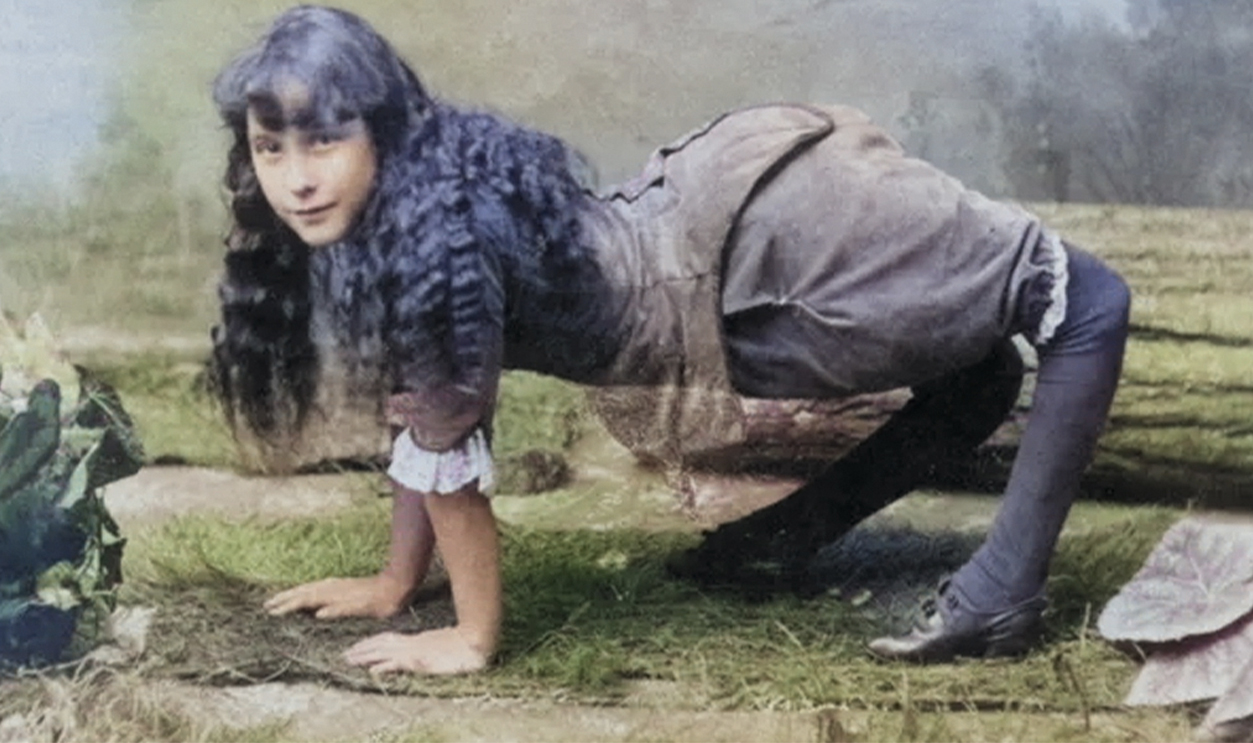
2. She Was A Mystery
Ella Harper’s birthplace is a bit of a mystery, but most believe it's Hendersonville, Tennessee, around 1870. If this is true, Harper shared her hometown with some incredibly noteworthy people. Both Taylor Swift and Kelly Clarkson lived in Hendersonville for periods of time. Like these future stars, Harper was destined for fame, but for a far more harrowing reason.
3. They Were An Ordinary Family
Before her birth, Harper’s family had no clue what the future had in store for them. Her father, William Harper, was a farmer who raised stock, while her mother, Minerva Ann Childress, likely tended to their growing family. They had a growing brood—but when Ella was born, she changed their lives forever.
4. It Was A Special Delivery
Ella Harper had a twin brother named Everett—but that wasn't the most extraordinary aspect of this birth. When her parents saw Ella for the first time, they must have known that something was terribly wrong. You see, on the census that went through the United States at the time, her parents listed her as “disabled”. Further down the page, they ticked off “deformed”.
5. She Was Different
Little Ella Harper’s legs were different from any other legs her parents had ever seen. The problem was at the knees. It seemed that Ella’s knees bent the opposite way from absolutely everyone else’s knees. However, her twin brother Everett didn't have the same disability, which was likely a relief for the worried parents.
But as it turns out, Everett wasn't as safe as they thought.
6. She Lost Him
We don’t know much about Everett Harper, but what we do know is tragic. Poor little Everett only survived a few months. It was a sad beginning to Ella Harper’s life. She lost her twin brother and had to face the world with a deformity that would make her stand out from the rest of the world.
As the Harper family mourned the loss of Everett, fate threw them a curve ball that they could have never expected.
7. He Was On Their Doorstep
In total, Harper had four siblings, but records indicate that there may have been a fifth. This was a little brother named Earl. But the way in which Earl entered the Harper family was a bit of a shocker. They literally found him on their doorstep in a basket. It seemed that fate was stepping in and replacing little Everett—but in truth, there was an even darker reason.
8. It Was Not Random
It could be that baby Earl's appearance wasn't as random as it seemed. You see, the child was actually related to the Harpers—but, shockingly, only to the family's patriarch. It seems possible that William Harper had had an affair outside the family which resulted in a pregnancy. However, this is merely speculation.
Nevertheless, the Harper family once again had five children to feed. They also had to manage Harper's disability.
9. She Was Rare
Eventually, the cause of Ella Harper’s condition became known. It was a condition called congenital genu recurvatum—or "back knee deformity". This rare situation meant that Harper’s knees bent the opposite way. With legs like these, little Harper was going to have to learn to walk in a very different way.
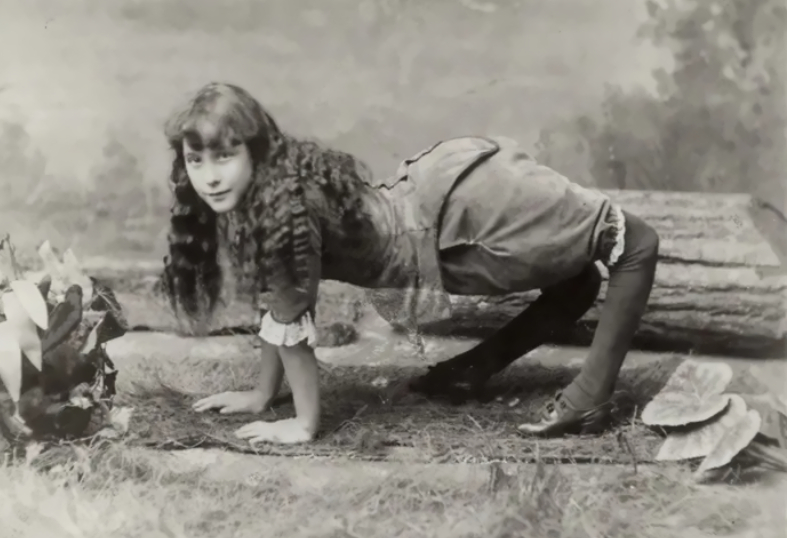 Unknown Author, Wikimedia Commons
Unknown Author, Wikimedia Commons

Sign up to our newsletter.
History’s most fascinating stories and darkest secrets, delivered to your inbox daily. Making distraction rewarding since 2017.
10. She Needed To Move
As Harper grew older, she had to find a way to move. With her knees bending backward, walking upright was totally out of the question. Harper had to do what came naturally to her—and “walking” on all fours became the solution. But if her parents worried that their daughter would need constant care for the rest of her life, they could not have been more wrong.
11. There Were Freak Shows
During this time, traveling circuses were a hugely popular form of entertainment. What you could expect to see were the typical acrobats, clowns, and exotic animals. However, during the 1870s, there were new shows at the circus—"freak shows"—and with Harper’s deformity, it seemed inevitable that the two would one day meet.
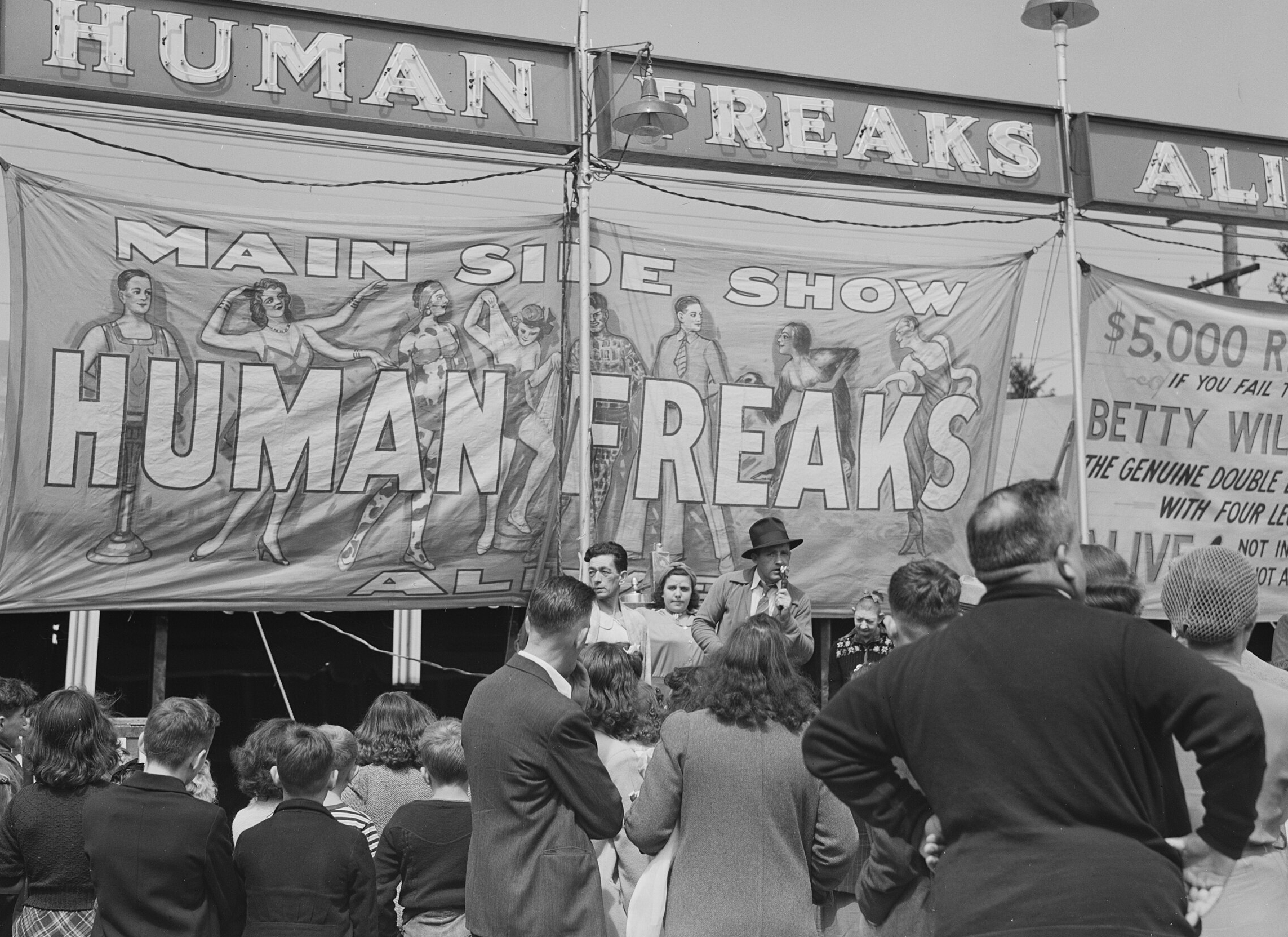 Jack Delano, Wikimedia Commons
Jack Delano, Wikimedia Commons
12. She Had To Be Careful
"Freak shows" tended to exhibit people who were unusually big or small compared to the general population. They also featured people suffering from diseases and special conditions. Harper’s “deformed” legs certainly fell into that category. The thing was, "freak shows" were not always a place that treated the performers with great dignity.
If Harper was going to go there, she’d have to be very careful.
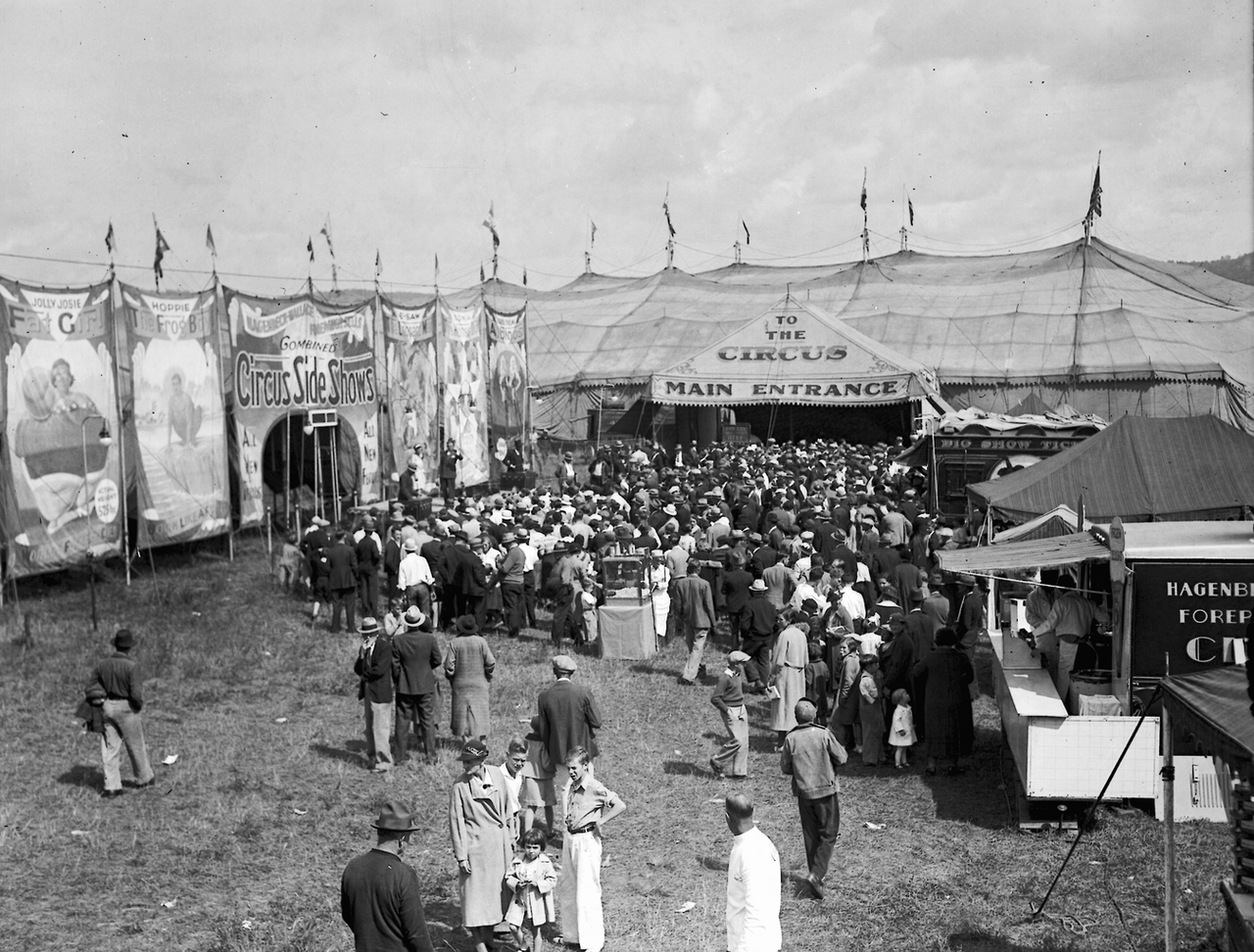 Atwell, Harry A., Wikimedia Commons
Atwell, Harry A., Wikimedia Commons
13. They Were Desperate To See Her
Some believe that it was Harper’s own idea to turn her physical deformity into a money-making scheme. One way or another, Harper ended up in the circus. She made her premiere in October 1882, and her first shows were in New Orleans and St Louis. Word got around and many people were suddenly desperate to see the girl with the extraordinary knees.
However, Harper was only 12 years old, and working in this business was a dehumanizing, and often dangerous, endeavor.
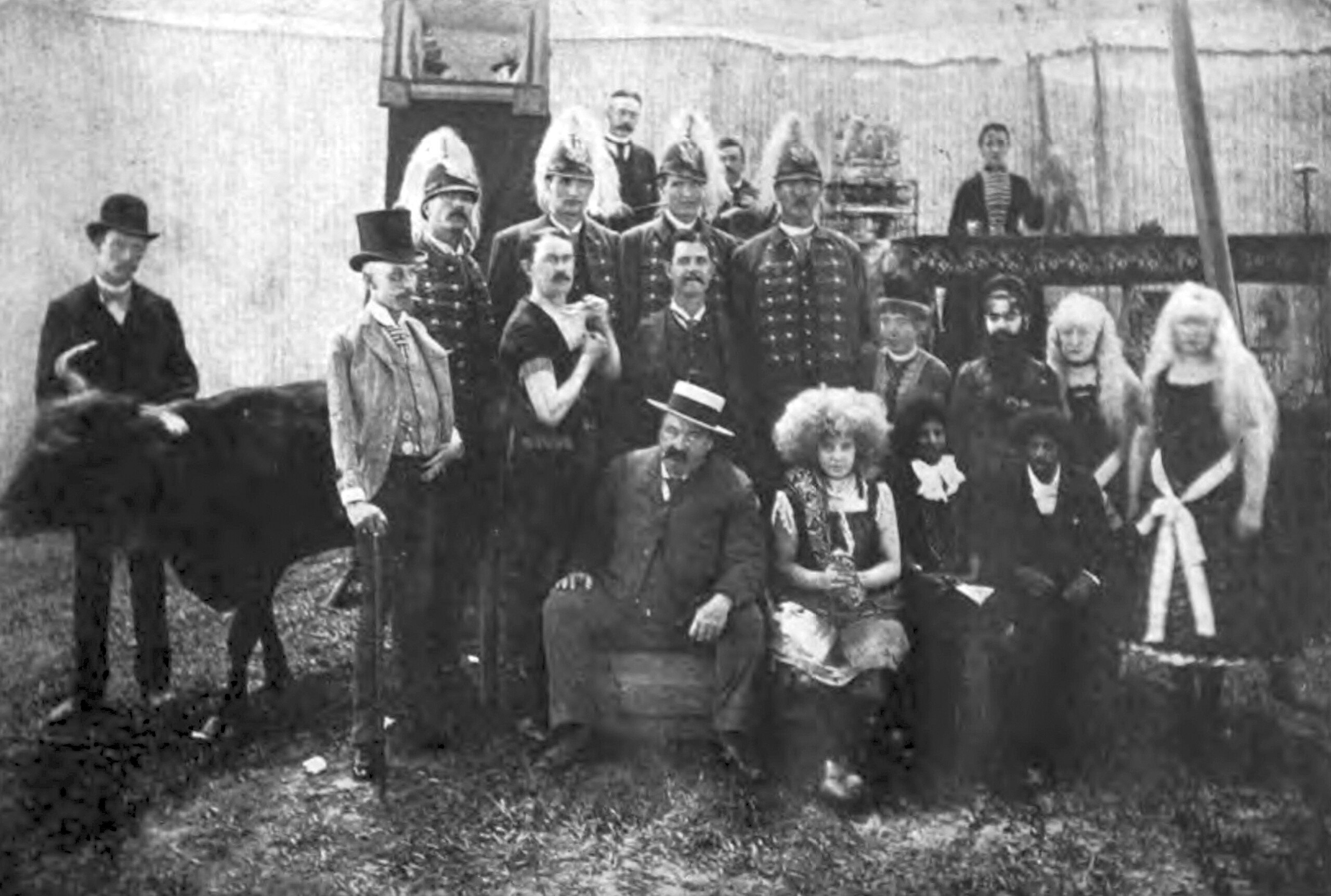 Unknown Author, Wikimedia Commons
Unknown Author, Wikimedia Commons
14. The Laws Were Against Her
You see, back in the 1860s, something called the "ugly laws" came into play. The laws prohibited "diseased, maimed, mutilated, or in any way deformed" people from showing themselves in public. As you can imagine, this made it almost impossible for these folks to find work and make a living. However, they were allowed to appear in exhibitions.
But exhibiting one's body was never going to be an easy feat.
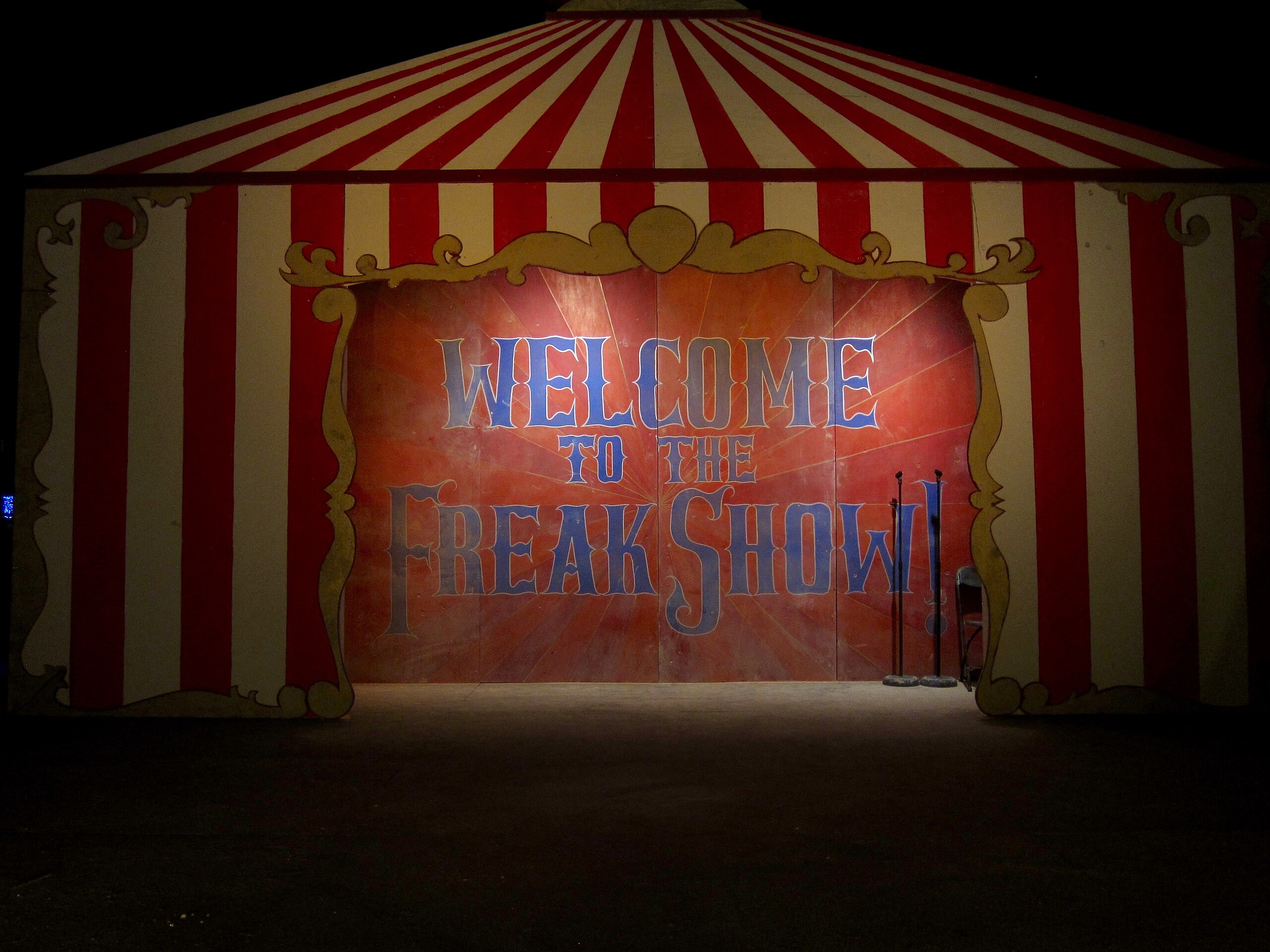 Jon Evans, CC BY 2.0, Wikimedia Commons
Jon Evans, CC BY 2.0, Wikimedia Commons
15. The Only Way She Could Make Money
For many people like Ella Harper, performing in "freak shows" was their only way of earning money. While some enjoyed successful careers and built their fortunes, others were disturbingly exploited and paid very little. Even some of the bigger headliners suffered from the sheer amount of work their employers pushed them into.
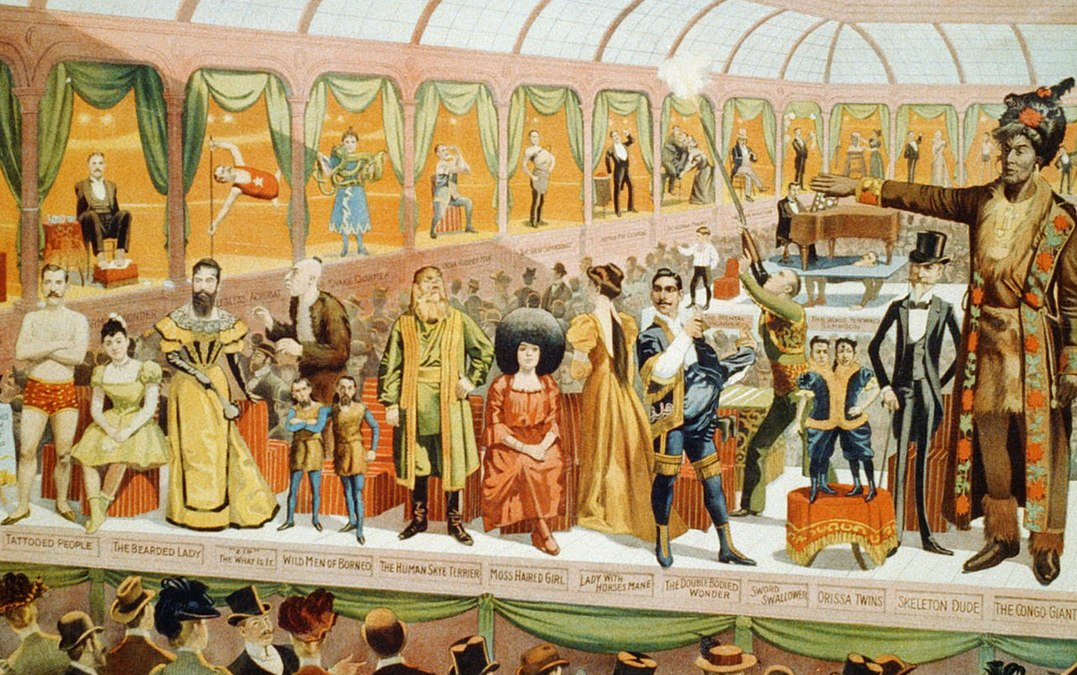 Library of Congress, Wikimedia Commons
Library of Congress, Wikimedia Commons
16. She Lived In An Unfair World
The performing schedules of sideshow performers were pretty brutal. Reportedly, they had to put on 10 to 15 shows a day on average—and it was quite common for them to only receive a low percentage of their total earnings. This was the unfortunate reality that Harper's future promised.
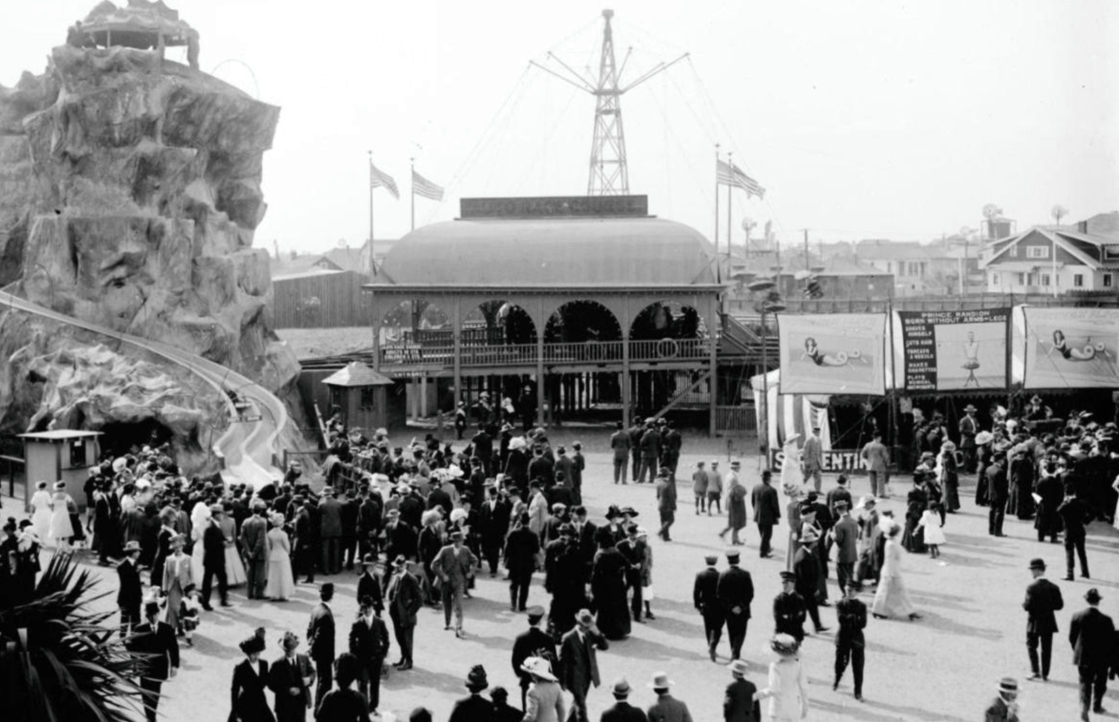 Unknown author, Wikimedia Commons
Unknown author, Wikimedia Commons
17. She Needed To Move Up
For the next few years, Harper made a name for herself in the "freak show" circuit. The problem was that these shows were small-time endeavors. What Harper needed was a step up. She needed to hit the big time. Well, she was about to receive an invitation that would change her life forever.
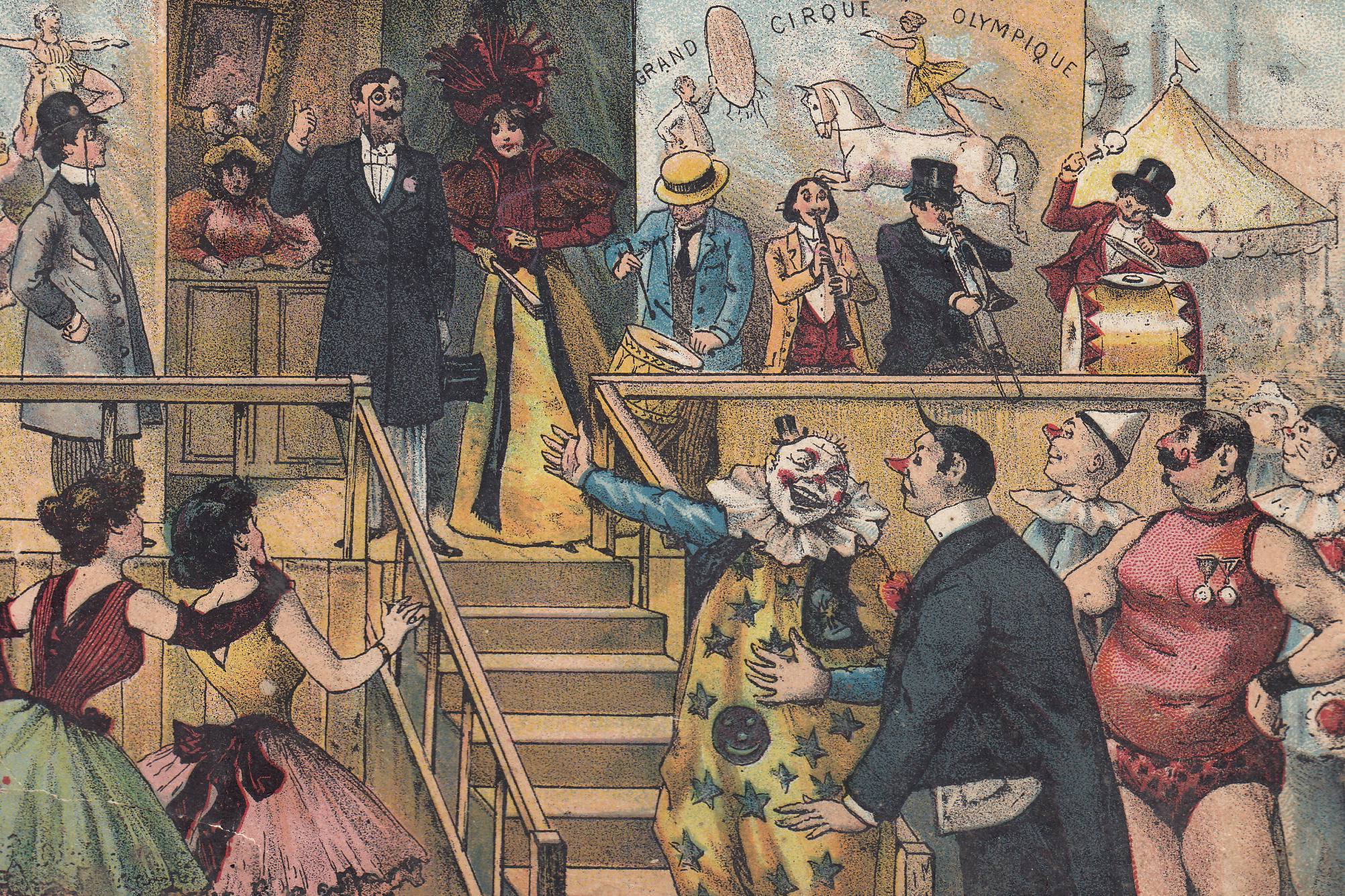 Unknown author, Wikimedia Commons
Unknown author, Wikimedia Commons
18. She Hit The Big Time
In 1886, when Harper was 16, she received an invitation. This was not to a party or a dance—it was to join the Nickel Plate Circus. This was one of the best shows and posters called it “unapproachable," “incomparable," and “colossal above all others”. This was clearly a brand new stage for Harper, and it would hopefully improve her situation.
Well, getting a big break doesn’t always equal getting respect.
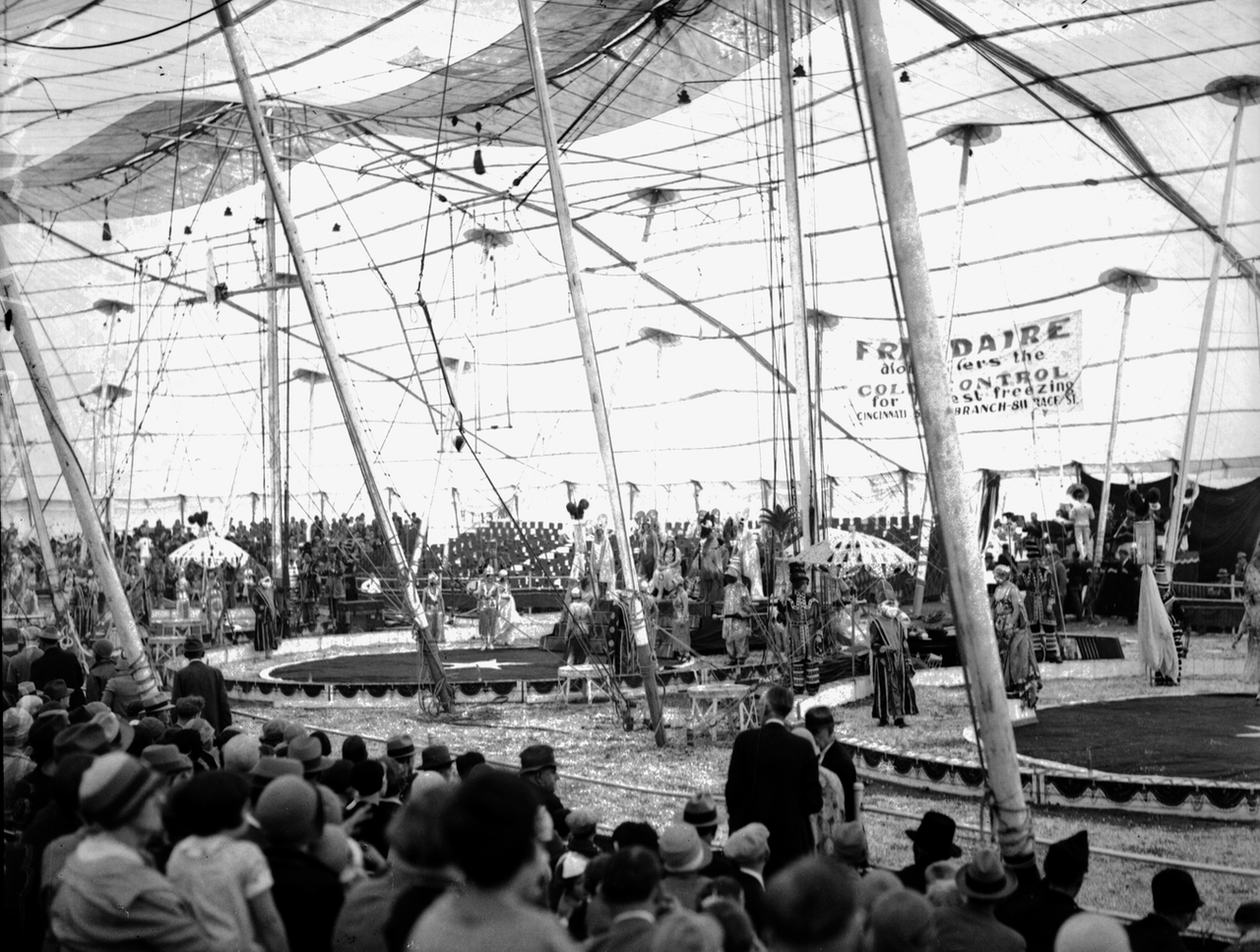 Atwell, Harry, Wikimedia Commons
Atwell, Harry, Wikimedia Commons
19. She Needed A Partner
The man behind Nickel Plate Circus was WH Harris and he wanted a way to help audiences understand Harper’s unique look. To do this, he came up with an idea for a partnership. Sadly, Harris’s plan would do very little to help with Harper’s self-esteem. In fact, it would make it much worse.
20. It Was Degrading
The partner that Harris found for Harper was not another performer. It was a camel. Harris’s rationale was that the camel’s legs were the best representation of the way Harper’s own legs worked. While putting Harper on stage with an animal was degrading, it earned her a nickname that would define her legacy.
21. They Believed A Lie
Soon everyone was calling Harper “The Camel Girl," but it didn’t stop with a nickname. People started to believe she was actually half camel and half human. Publicity advertisements said that she had a “beautiful face," and that connected to this face were the “body and limbs of a camel”.
The public became desperate for any information about Harper, and one advertisement went too far.
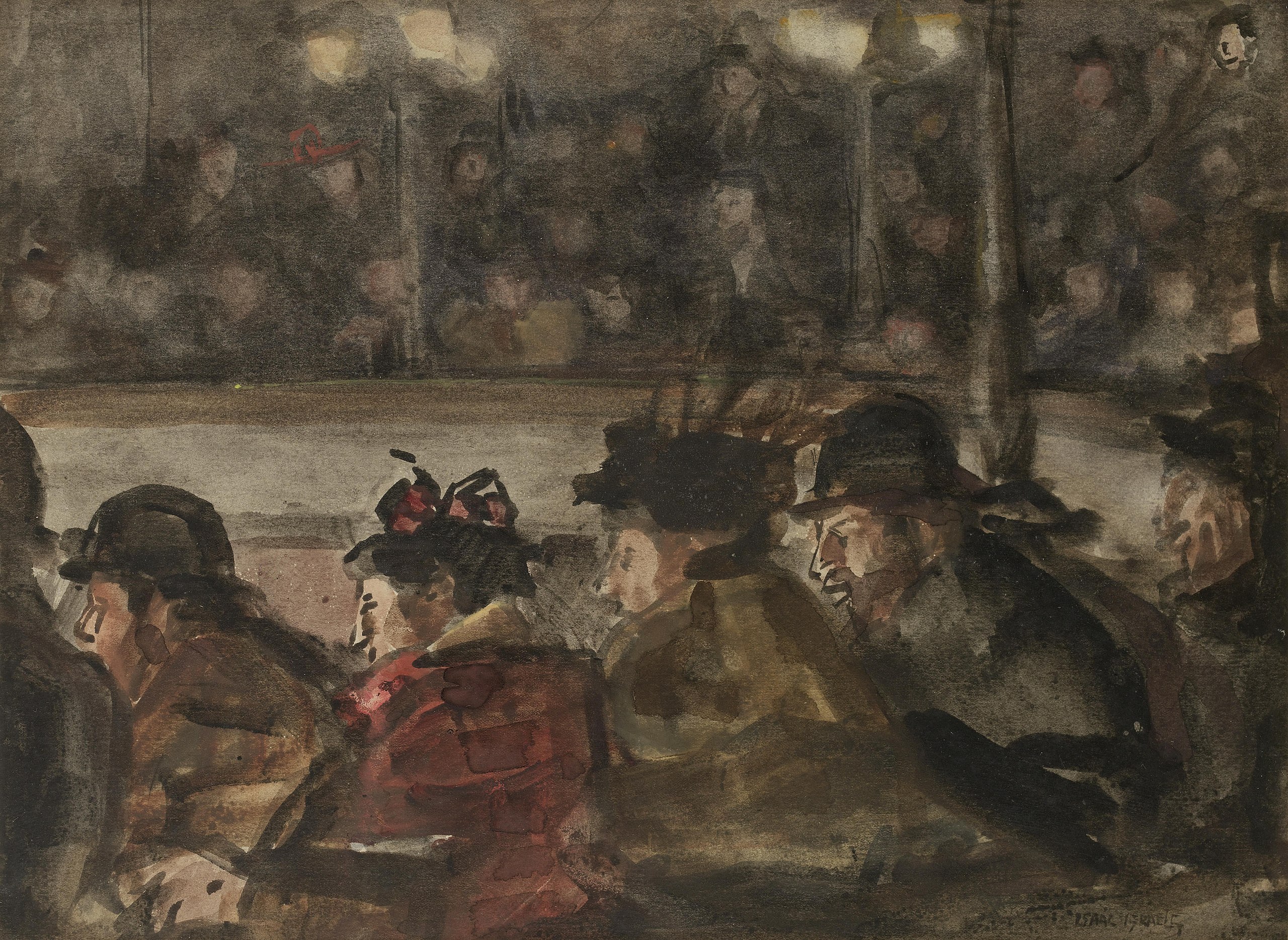 Isaac Israëls, Wikimedia Commons
Isaac Israëls, Wikimedia Commons
22. The Discovered The Truth
One ad for the circus asked the cheeky question: "Is she a girl or a camel?” This was nothing new, but then the ad went on to list Harper’s salary, which they grossly exaggerated. With audiences spending their money to gawk at her, she began to face the scrutiny of the media.
 KMJ, CC BY-SA 3.0 , Wikimedia Commons
KMJ, CC BY-SA 3.0 , Wikimedia Commons
23. They Called Her Names
Around this time, newspapers started printing reviews about the traveling circuses. One reviewer chose to focus his article on Harper. This reviewer cruelly called her “a freak of nature”. While today such name-calling would be totally unacceptable, back then these words didn’t seem to bother anyone. We can only imagine how Harper felt when she read the review.
Even with such horrible things written about her, Harper was still at the top of her game.
24. She Was The Best
The images of Harper and her “camel legs” became hugely popular. Harris began using her for most of the show's promotional material—and she became the star of the Nickel Plate Circus. As it turned out, audiences didn’t just want to gawk at her, they wanted to understand what had happened to her.
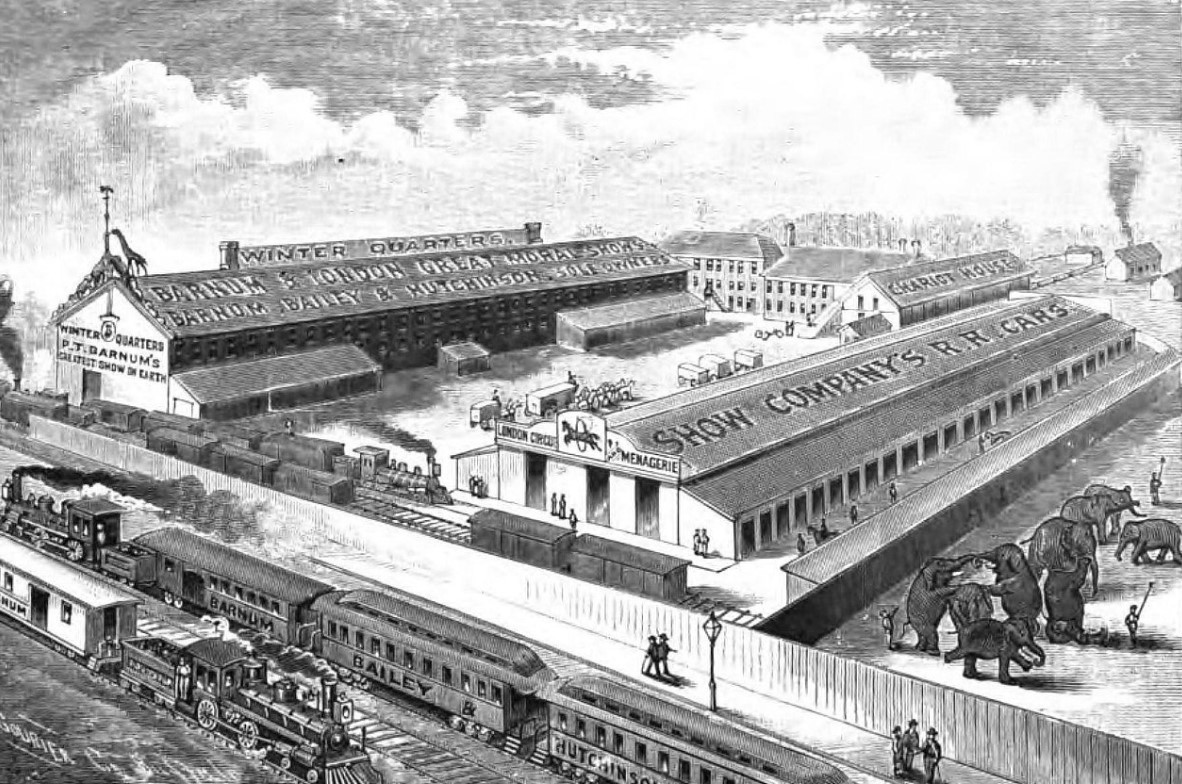 Unknown Author, Wikimedia Commons
Unknown Author, Wikimedia Commons
25. She Was "The Most Wonderful Freak Of Nature"
Some say that there’s no such thing as bad publicity. Well, for Harper this wasn’t true at all. As she traveled from city to city, newspapers began reporting on her. The press went so far as to give her the most backhanded compliment imaginable: “the most wonderful freak of nature since the creation of the world”.
Harper had a lot to live up to, and there was bound to be some disappointment.
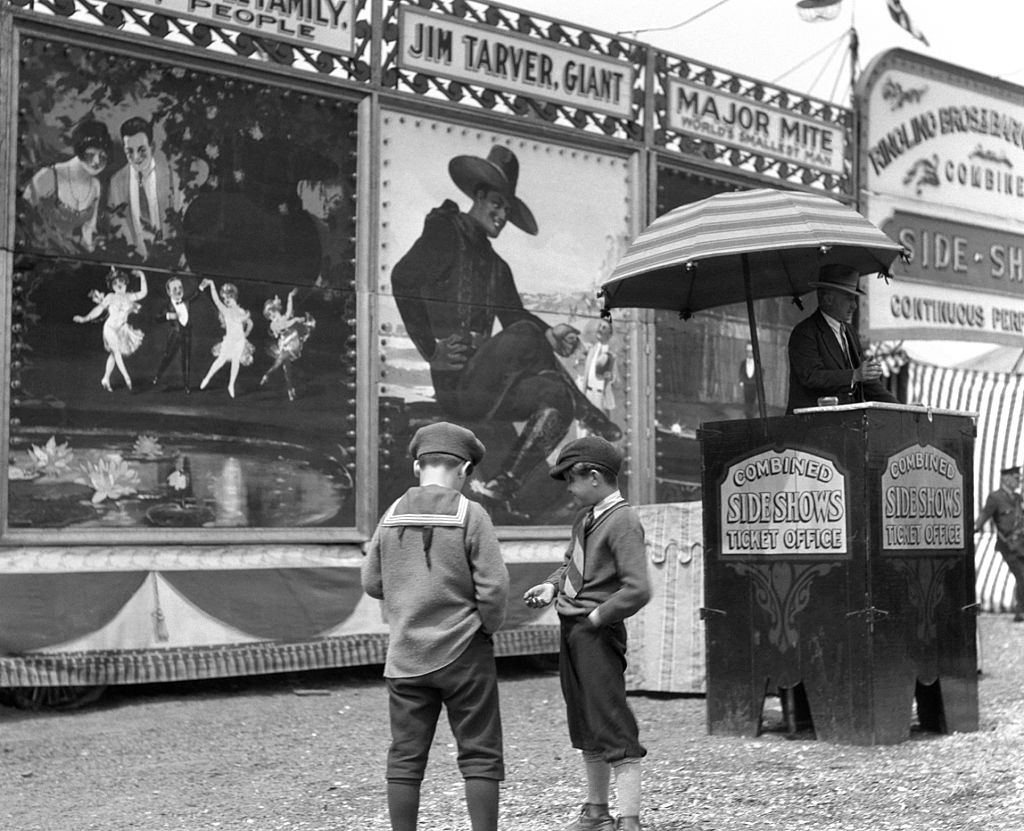 H. Armstrong Roberts, Getty Images
H. Armstrong Roberts, Getty Images
26. They Called Her A Phony
One spectator who’d decided to part with his money and get a look at the “camel girl” found the experience to be less than authentic. This reviewer said that "The Camel Girl" was a phony. He actually got it right when he called Harper a girl with a pleasant face, who just happened to have knees that turned backward.
In spite of a few disappointed fans, Harper was actually living the high life.
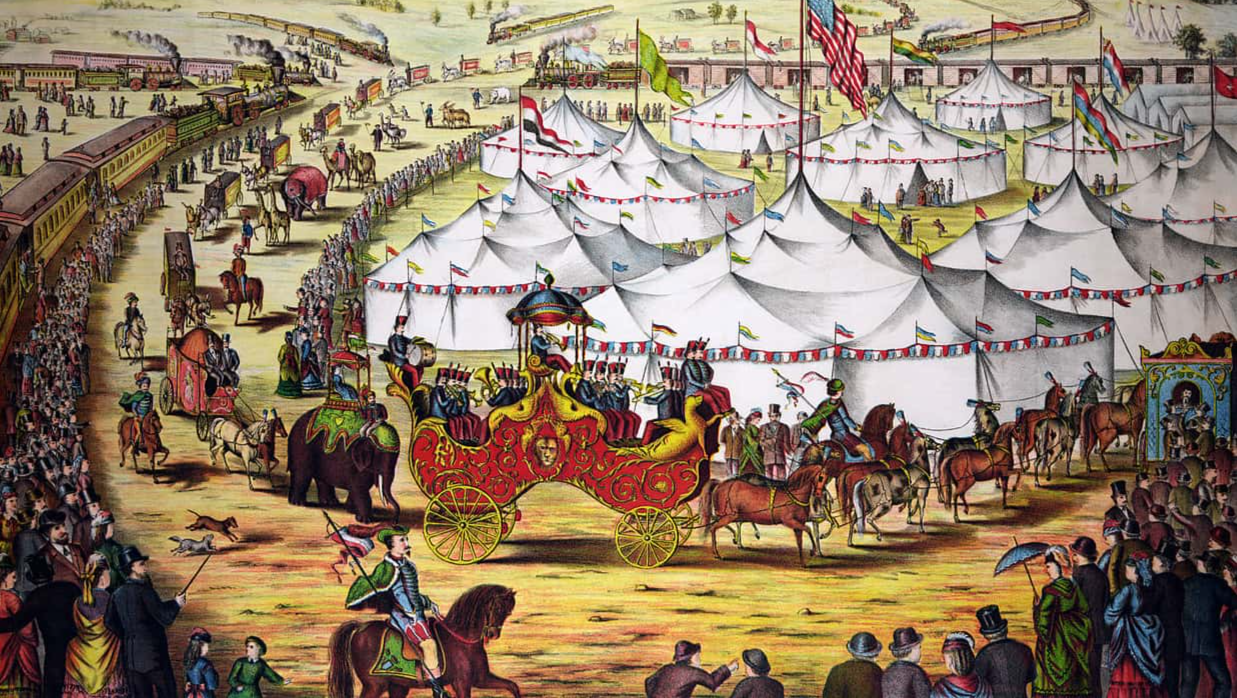 Gibson & Co., Wikimedia Commons
Gibson & Co., Wikimedia Commons
27. She Raked It In
While working for Harris, Harper managed to rake in a pretty good salary. Her actual earnings were approximately $200 per week. In today’s dollars that would be an astounding $5,000 per week. Not bad for a teenager. Now Harper had to think about what she was going to do with all that money.
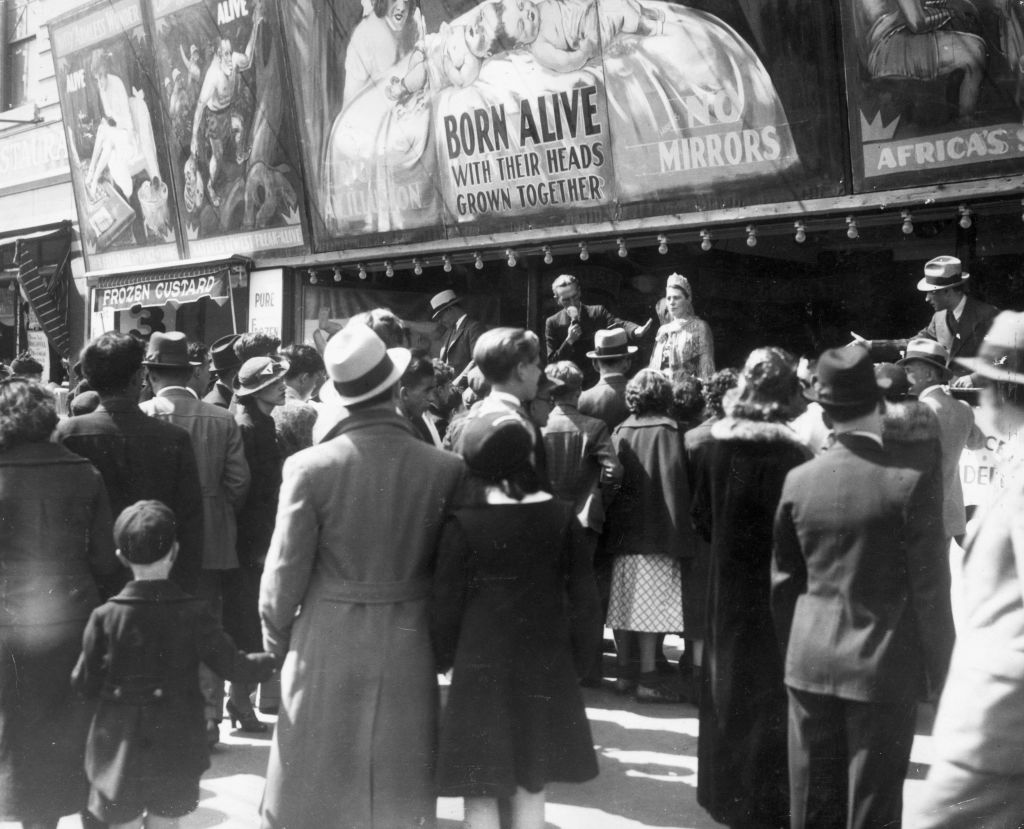 Harold M. Lambert, Getty Images
Harold M. Lambert, Getty Images
28. She Got Ready To Leave
Harper did have a plan. She wanted to eventually quit the circus and use her money to get an education. Along with the tickets people bought, they also received a pitch card. These cards outlined Harper's stage name and special condition, but also included another very important piece of information—that she wanted to quit the circus and continue her studies.
As it turned out, Harper got out at just the right time.
29. She Skirted Disaster
Though Harper quit performing in 1887, Nickel Plate Circus had a daunting future ahead of them. Most notably, in 1902, their most famous elephant broke free from the circus, ending her trainer’s life by trampling him and then running away. Both local residents and circus employees were in danger as the elephant ran amok.
Luckily for Harper, she'd said her goodbyes early enough to evade such drama. However, her new life became something of a mystery.
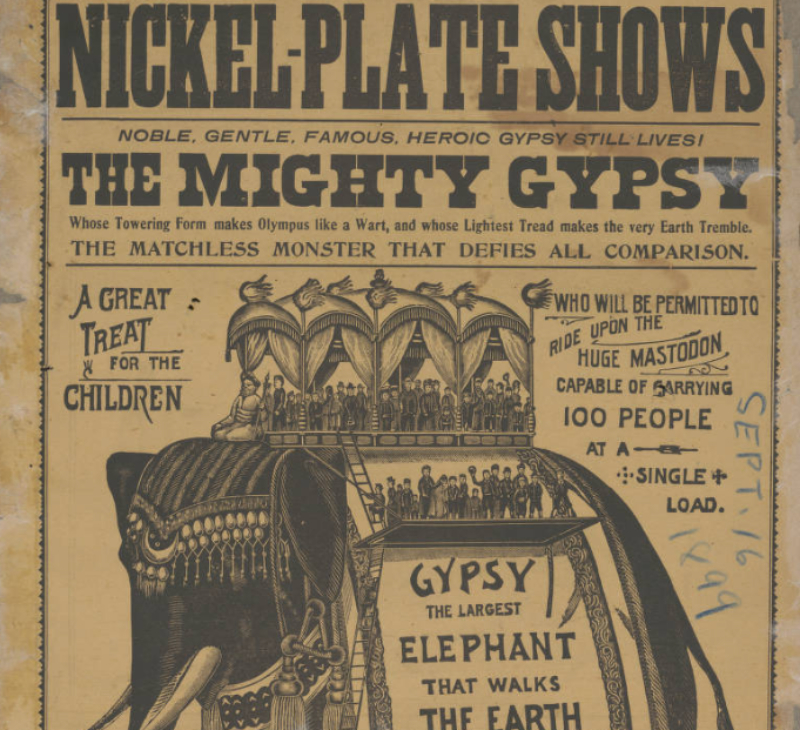 Unknown Author, Milner Library
Unknown Author, Milner Library
30. She Disappeared
Harper’s departure from the world of the circus was more than a little abrupt. Suddenly, the girl who Americans knew as "The Camel Girl" was out of the public eye. It was such a sudden departure that no one really knows what she did. Well, we can thank the United States government for letting us know what actually happened to her.
31. They Found Her
In 1900, the US government did a nationwide census, and that helped historians figure out what happened to Harper. When she left the circus, she may or may not have gotten her education. She found her way back to Tennessee and returned to her parent's home. Sadly, there had been some tragic changes in her family life.
32. There Was A Fire
Around 1890, a terrible fire had destroyed Harper's childhood home—but that wasn't the worst part. Sadly, the fire had also taken the life of her father. For Harper’s mother, this fire must have been one of the worst cases of deja vu ever. You see, this family had a history filled with horrible fires.
 Richard Wallace, CC BY-SA 3.0, Wikimedia Commons
Richard Wallace, CC BY-SA 3.0, Wikimedia Commons
33. It Happened Before
Before Harper’s mother had turned seven years old, a horrible blaze struck their family home. By the time firefighters could put it out, Minerva had lost both her parents. Losing her husband in the same way must have been devastating for her. But there was more tragedy waiting in the wings.
 Richard Wallace, CC BY-SA 3.0, Wikimedia Commons
Richard Wallace, CC BY-SA 3.0, Wikimedia Commons
34. She Kept Losing Family Members
Just five years later, Harper's sister Willie reportedly contracted tuberculosis and passed. Harper had been put through the emotional wringer, but thankfully, there was a silver lining on the horizon. Perhaps she'd be able to achieve some semblance of peace.
35. They Made A Move
Sometime in the early 1900s, Harper and her mother moved to Nashville, Tennessee. There, they started living at a boarding house, and it seemed that Harper would continue her quiet life living alone with her mother. That’s when something completely unexpected happened. Allegedly, a neighboring family decided to introduce Harper to a man.
For all we know, this was Harper’s first go at romance.
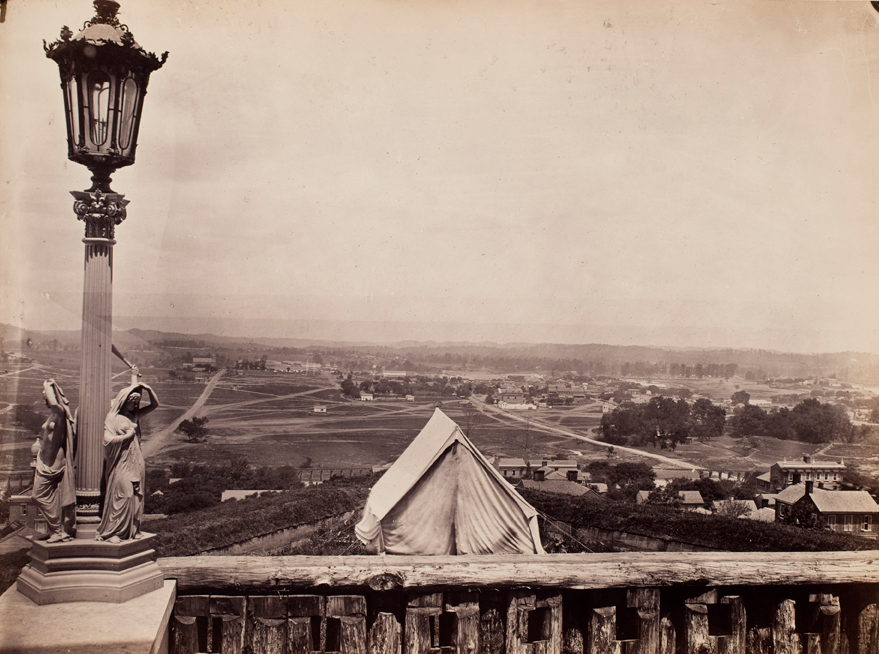 George N. Barnard, Wikimedia Commons
George N. Barnard, Wikimedia Commons
36. He Had No Problem
The man that Harper met was Robert Savely. Savely was very respectable and had decent jobs as both a schoolteacher and a bookkeeper. He seemed to have no problem with Harper’s unusual appearance, or even that she walked on all fours. The two started dating and before long, these two were ready to make the next big step.
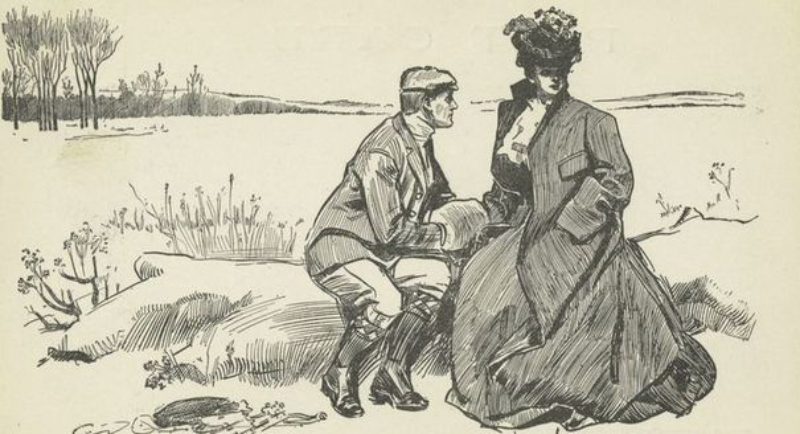 New York Public Library, Picryl
New York Public Library, Picryl
37. She Walked Down The Aisle
The city records show that Harper and Savely married in 1905, which would make Harper 35 years old. After one year of marriage, the inevitable happened, and Harper found herself pregnant. Mabel Savely was born without incident, and this made one happy little family. Sadly, fate still had its evil eye on Harper.
38. They Lost Her
Harper only had a brief time to enjoy being a mother to little Mabel Savely. The child didn’t live to see even her first birthday. Determined to defeat what seemed like a family curse, Harper and Savely tried to conceive another child, but they had no luck. In 1918, they gave up on having a child of their own, but they hadn’t given up hope altogether.
39. They Gave Her A Special Name
Harper still wanted to raise a child, so she and her husband went to the local orphanage looking to adopt. Here they came across a baby girl, and they took her into their home and made her their daughter. Soon the baby had a name: Jewel Savely. Unfortunately, true happiness evaded Harper at every turn.
40. History Repeated Itself
Little Jewel Savely didn’t have much of a chance at life. When they had adopted her, Jewel was only three months old. Just 18 days after bringing her home, the infant passed. They listed the cause of her early demise as "status lymphaticus." Harper had to endure yet another stunning loss. How much more could she take?
41. She Faced Loss
In her short life so far, Harper had faced many devastating losses. It started with the premature demise of her twin brother. Next, there was the tragic loss of her father in a house fire, and then her sister's passing. As an adult she lost the child she conceived, and even the one she adopted. Harper was likely getting used to losing the things she loved and was probably wondering who she’d lose next.
42. They Couldn’t Care For Her
Based on one source, Harper eventually reached a point where she had to relocate her mother. One possibility is that she had become too much of a burden to care for. Now, Harper had amassed quite a fortune performing in "freak shows," but what she did with her mother suggests that her fortune was not quite what we had previously thought.
43. They Put Her Away
Sometime before 1920, Minerva Harper entered the Home for Masonic Widows and Orphans. This was no fancy care home, as the Masonic home provided assistance to people who couldn’t afford anything else. We can assume that Harper’s hard-earned circus money was quickly drying up. With her mother cared for, all Harper needed was a simple place where she could grow old with her husband.
As it turned out, even that was too much to ask for.
44. She Got A Diagnosis
With her mother in care, Harper and her husband decided to make a move. In 1920, she and her husband set up a home in Tennessee, but Harper wouldn’t be there long. Doctors soon discovered that there was something dreadfully wrong with her.
But this had nothing to do with her legs.
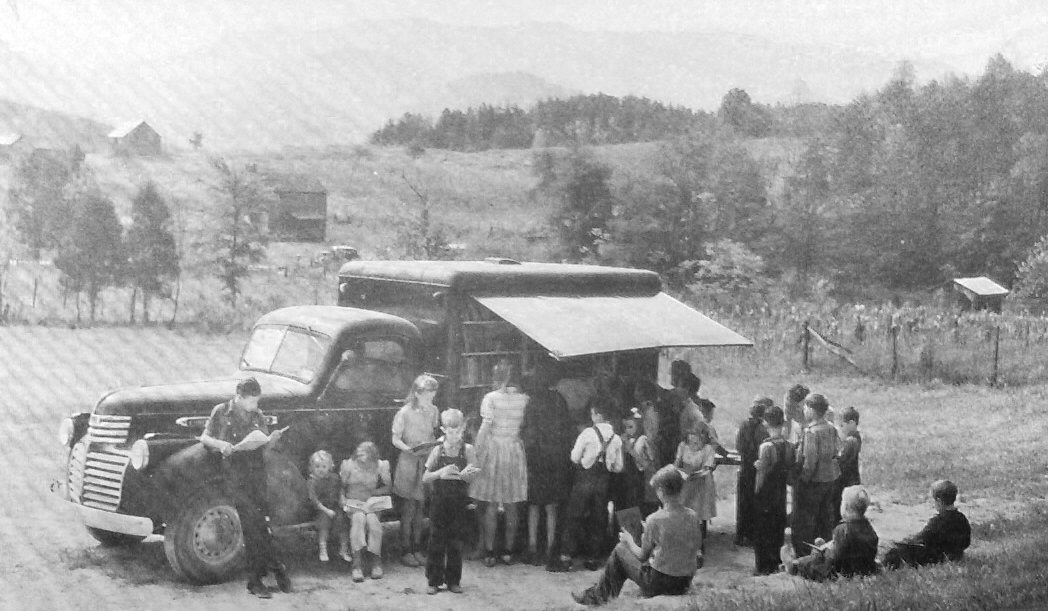 Tennessee Valley Authority, Wikimedia Commons
Tennessee Valley Authority, Wikimedia Commons
45. She Was Suffering
Turns out, Ella Harper had colon cancer. After all her struggles with her legs, this came right out of left field. Harper now had a new battle—but it proved far more difficult than learning to walk on all fours. She eventually lost her struggle with cancer, and on December 19, 1921, she passed. She was just 51 years old.
Harper's life had undoubtedly been hard, so her loved ones went out of their way to make her afterlife a little more pleasant.
46. She’s Resting Peacefully
In the Spring Hill Cemetery in Nashville, Tennessee, there is a historic section. Here you can find Harper’s gravestone, where she lies peacefully, close to her children. Eventually, when Harper’s mother and husband also passed, they joined her there as well. In the end, Harper certainly had her share of tragic losses, but there is one thing that she can hang onto forever.
 Thomas R Machnitzki, CC BY-SA 3.0, Wikimedia Commons
Thomas R Machnitzki, CC BY-SA 3.0, Wikimedia Commons
47. She Was At The Top
To this day, many people still have a certain reverence for Harper. "The Camel Girl" somehow managed to rise up among her fellow circus "freak" artists. While it may not be official, there are people out there who call Harper “one of the most popular circus performers of all time”. This should be the end of Harper’s story, but some people just can’t seem to forget about "The Camel Girl."
48. Her Shoes Became Legend
One website boasts the existence of a pair of shoes that they claim belonged to Harper. These shoes apparently have magical powers. If you put them on, your knees will reverse from their usual direction—just like Harper’s did. The website claims that the moment you take the shoes off, your knees will go back to normal.
Sadly, Harper’s very real problems were not so easily fixed.


